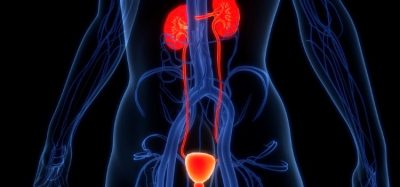Embracing green innovation in life sciences
Posted: 13 January 2025 | Shishir Patel (Chiesi UK and Ireland) | No comments yet
Shishir Patel, Medical Director at Chiesi UK and Ireland, explores the efforts made to develop sustainable healthcare solutions in life sciences. Alongside examining low global warming potential (GWP) propellants and the need for investment in sustainable R&D infrastructures, he highlights the urgency for action on climate change and the importance of reconciling sustainability goals with high quality patient care, sector-wide collaborations and strong regulatory structures.


Given the well-recognised impact of the life sciences industry on the environment, delivering innovative treatments in a sustainable way has never been more important. Research shows that the overall carbon emissions of the biotechnology sector globally totalled 193 million tCO2-e (tonnes of carbon dioxide equivalent) in 2022.1 This is largely driven by the energy required for production and supply chains.2
As an industry, we are acknowledging this challenge head on and many of us are triangulating a new vision of our traditional skills and services that firmly places ‘green innovation’ alongside scientific and medical innovation.3 Encouragingly, there are many examples of the life sciences sector seeking to embrace sustainable drug development; reconciling the drive for innovation with the need to reduce waste and emissions produced during the R&D process, as well as throughout the product lifecycle.
Low global warming potential (GWP) propellants
Green innovation is particularly important in respiratory health, and a key starting point to de-carbonise the development lifecycle is the products themselves. Currently, in the UK, inhaler emissions account for three percent of the NHS’s carbon dioxide emissions.4 The NHS, as well as the UK Government, has its own Net Zero goals, and we recognised early on the impact that low GWP propellants could have. Chiesi began with a €350 million investment to deliver carbon-minimal inhalers for asthma and chronic obstructive pulmonary disease (COPD) patients. This step alone is expected to reduce our carbon emissions by up to 90 percent. The propellant that will be used in Chiesi products is manufactured in the UK, and our global Phase III studies are well underway at five UK sites.
Our research has demonstrated that these redeveloped inhalers for asthma and COPD, which use carbon-minimal propellant gases, present an effective solution for minimising their carbon emissions5 and builds on our foundations of transitioning to more environmentally conscious solutions. Chiesi has a history in this space; for example, we were one of the first companies to develop chlorofluorocarbon-free (CFC-free) inhalers.
In a study comparing a low-GWP propellant with a traditional propellant often used in metered dose inhalers (MDIs), the carbon footprint was found to be reduced by over 90 percent
This drive for innovative inhaler solutions presents a great opportunity, yet it is no small task. Evolving from traditional propellants to low-GWP propellants is a complex process as the active ingredient is held in the device’s solution or suspension and therefore has an impact on the entire formulation of the inhaler.5 However, the benefits are well documented. In a study comparing a low-GWP propellant with a traditional propellant often used in metered dose inhalers (MDIs), the carbon footprint was found to be reduced by over 90 percent.6
Thinking beyond the propellant, approaches to sustainable respiratory care require holistic thinking as it is a delicate balancing act. For example, while much research has been undertaken regarding the effects of pressurised MDIs (pMDIs) on global warming, there is emerging insight into the lifecycle of inhalers that needs to be contextualised: dry powder inhaler (DPI) devices have a higher percentage of non-recyclable plastics and therefore present a challenge in the management of end-of-life devices.7
Building CO2-neutral, defossilised supply chains for chemicals
As an industry, our priority must be to reduce our environmental impact while ensuring that patients maintain choice in the treatment that works best for them. Research demonstrates that the greenest inhaler is the one that is used and that leads to disease control.8 Switching patients’ devices based purely on environmental reasons could have a detrimental impact on disease control, resulting in exacerbations, hospitalisation and wasted product – all of which cost time, money and carbon. The focus should be on evaluating the full lifecycle of products, alongside the wider context of disease control.
Investing in expanded R&D infrastructure and capabilities
Transitioning towards more sustainable solutions requires investment in expanded infrastructure and capabilities.
We have programmes that investigate the types of medicines we produce and how we produce them, the energy we use (globally, 99 percent of our energy comes from renewable sources), and the practices of our entire global value chain. This includes, for example, the construction of a new manufacturing site to develop carbon-minimal inhalers, with the necessary capabilities to deliver novel requirements, such as changes to production lines and processes to be more sustainable for the future.
In addition, this greener evolution of industry operations also includes key steps like embracing digital technology to drive efficiencies, mechanisms to minimise water usage, and a commitment to sustainable science that runs through the entire R&D fabric. At Chiesi, for example, this is demonstrated through our My Green Labs certification, which is considered the gold standard for laboratory sustainability best practices around the world.9
Building a supportive environment for green innovation to thrive
To maximise the impact of green innovation, work is ongoing to move the sector towards expanded regulatory and policy frameworks that will support future considerations, not only around the molecule but also its impact on the environment.
Incentivisation of green innovation must also be a factor; encouraging businesses to invest and supporting rapid introduction and uptake of innovations. In the future, a medicine’s value cannot be determined solely by its impact on human health, but also its impact on planetary health.
In the UK, for example, incentivisation and support for green innovation within the life sciences sector is currently limited. We see how incentivisation has accelerated change in other sectors, such as energy, via renewable power subsidies.10 When we look at the current Voluntary Scheme for Branded Medicines Pricing, Access, and Growth (VPAG), which is a rebate scheme from pharmaceutical companies to the Department of Health and Social Care, the narrow definition of innovation excludes green solutions, resulting in companies being disincentivised from bringing more sustainable solutions to market. This is at odds with Government and NHS Net Zero ambitions and policies. If we want to lead the way in green innovation and show that the UK is ‘open for business’, we need a broader definition and recognition of innovation.
With our carbon-minimal inhaler programme, for instance, the investment we are making is significant. At Chiesi, we are conducting the same rigour in terms of safety and bioavailability studies as we would for a new molecule, navigating regulatory and reimbursement discussions, and having to build entirely new manufacturing sites and capabilities. The process of innovating is much the same, yet the way that green innovation is viewed is not.
End-of-life devices: the role of recycling
At a wider level, collaboration between industry and health systems is vital to driving a holistic approach as well as recognising the impact of ‘low hanging fruit’.
Chiesi has collaborated with the NHS and other partners on two inhaler schemes (Take AIR and Re-Hale) to test the feasibility of nationwide inhaler recycling. Take Action for Inhaler Recycling (AIR) was delivered alongside the University Hospitals Leicester NHS Trust and Leicestershire and Rutland Local Pharmaceutical Committee as the first scheme to allow patients to recycle their inhalers through the post.
Sustainable pharma packaging: breaking down the barriers to adoption
Over two years it resulted in approximately 52,000 inhalers being returned, equating to approximately 305 tonnes of CO2. Re-Hale, which is currently ongoing in collaboration with NHS Kent and Medway Integrated Care Board, has seen the introduction of an inhaler recycling scheme within the East Kent area to collect unwanted inhalers using local ‘drop-off’ collection sites, including acute trusts, primary care and community pharmacies. By collaborating on these pilot schemes, we aim to test the feasibility of a range of options and share these insights with the NHS to facilitate a nationwide scheme in the future.
As an industry, we recognise the urgency of the climate change challenge and are rightly setting ourselves ambitious commitments to support the transition to Net Zero. To meet these commitments, our goal must be to deliver transparent, environmentally conscious solutions across all disease areas.
One example of how this is being enabled is theCircularity in Primary Pharmaceutical Packaging Accelerator (CiPPPA), which is an industry consortium focused on tackling the challenges of safe and environmentally effective waste and recycling solutions for medicines.
The effect of medicines on patients must remain paramount, but we should not have to choose between their health and the health of the planet. It is our role as R&D leaders to ensure that our medicines meet these demands, whether that be with low-GWP propellants in inhalers or other carbon-minimal solutions. Green innovation must be supported, encouraged and enabled – the potential impact is clear to see.
About the author
Shish Patel
Medical Director at Chiesi UK and Ireland
Shish trained as a pharmacist and has worked in the pharmaceutical industry for over 30 years. He has previously held positions at GSK and Sanofi. Shish holds key industry board positions including at the Prescription Medicines Code of Practice Authority (PMCPA) and the Association of the British Pharmaceutical Industry (ABPI).
References
- Carbon Impact of Biotech & Pharma Report: Collective Action Accelerating Progress to the UN Race to Zero. [Internet] My Green Lab: San Francisco California. 2023. [Cited 2024August]. Available from: https://www.mygreenlab.org/blog-beaker/2023-carbon-impact-of-biotech-pharma-report-collective-action-accelerating-progress-to-the-un-race-to-zero.
- Tao Y, Zhu S, Smith J, et al. Environmental Sustainability of the Globalized Pharmaceutical Supply Chains: The Case of Tenofovir Disoproxil Fumarate. ACS Sustainable Chemistry & Engineering. 2023; 11 (17), 6510-6522.
- Green Innovation. [Internet] ScienceDirect. [Cited 2024August]. Available from: https://www.sciencedirect.com/topics/economics-econometrics-and-finance/green-innovation#definition.
- Delivering a ‘Net Zero’ National Health Service. [Internet]. NHS England. 2022. [Cited 2024August]. Available from: https://www.england.nhs.uk/greenernhs/wp-content/uploads/sites/51/2022/07/B1728-delivering-a-net-zero-nhs-july-2022.pdf.
- Rony F, Cortellini M, Guasconi A, et al. Evaluating the Pharmacokinetics Of Beclomethasone Dipropionate/Formoterol Fumarate/Glycopyrroniu Bromide Delivered Via Pressurised Metered-Dose Inhaler Using A Low Global Warming Potential Propellant. Pulmonary Pharmacology & Therapeutics. 2024; 85: 1-9.
- Corr S. The Development of HFA-152a as a Sustainable Pmdi Propellent. [Internet] The Aerosol Society. 2019. [Cited 2024August]. Available from: https://aerosol-soc.com/abstracts/development-of-hfa-152a-as-a-sustainable-pmdi-propellant/.
- Murphy A, Howlett D, Gowson A, Lewis H. Understanding the Feasibility And Environmental Effectiveness Of A Pilot Postal Inhaler Recovery And Recycling Scheme. NPJ Prim. Care. Respir. Med. 2023; 33:5.
- Usmani OS, Levy ML. Effective Respiratory Management Of Asthma And COPD And The Environmental Impacts Of Inhalers. NPJ Prim. Care. Respir. Med. 2023; 33(1): 24.
- My Green Lab Certification: A commitment to Sustainable Science. [Internet] My Green Lab. [Cited 2024August] Available from: https://www.mygreenlab.org/green-lab-certification.html.
- Energy Security Boost With Multi-Million Backing For Renewables. [Internet] GOV.UK. 2023. [Cited 2024Nov]. Available from: https://www.gov.uk/government/news/energy-security-boost-with-multi-million-backing-for-renewables









